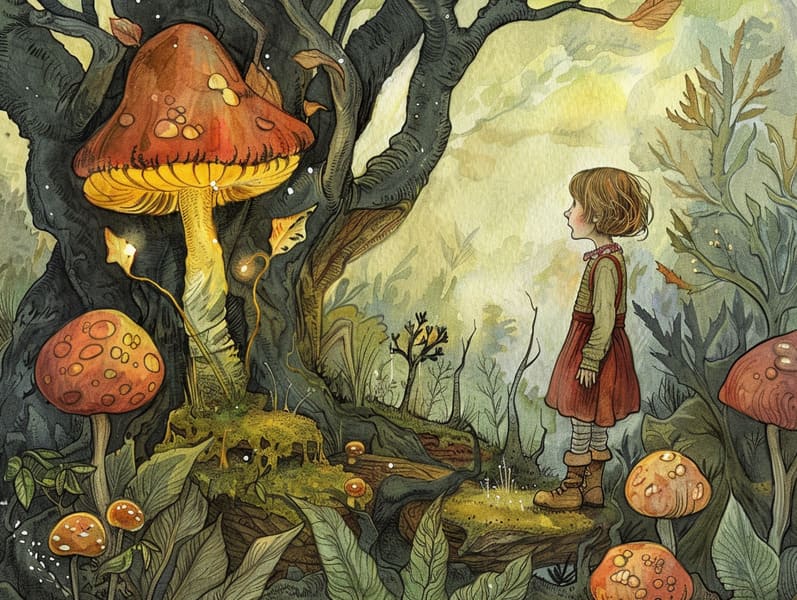Exploring the Joy of Nighttime Stories: Establishing Cherished Times with Your Children
Exploring the Joy of Nighttime Stories: Establishing Cherished Times with Your Children
Blog Article

The end of the day is a sacred time for adults and their kids. It’s a time to wind down, cuddle up, and experience the joy of sleepy-time tales.
For centuries, evening stories for little ones have been a esteemed custom, offering more than just a way to go to sleep. They provide an prospect for closeness, education, and sparking fantasy.
The Essential Role of Bedtime Stories
Evening stories for little ones serve more than a way to end the day. They play a significant role in a child’s progress and in building the adult-child bond. Here’s why they are important:
1. Connection Time: Bedtime reading fosters a special period of closeness between moms and dads with their little ones. It’s a moment of proximity that helps children feel appreciated and content.
2. Vocabulary Building: Listening to stories helps children develop their verbal abilities. They understand new phrases, understand form, and sharpen their understanding and understanding abilities.
3. Fantasy and Imagination: Nightly stories move them to enchanted worlds, nurturing vision. They see characters, settings, and adventures, which fuels their inventiveness.
4. Emotional Skills: Stories for little ones often depict characters facing difficulties and moods. These plots help kids understand and manage their own reactions, building emotional skills.
5. Thinking Skills: Following a story helps children develop concentration, recall, and logical thinking. They pick up to follow stories, remember details, and anticipate results.
Making Bedtime Stories a Habit
Starting a bedtime custom that includes narrating bedtime stories is doable and beneficial. Here’s how to ensure it becomes a beloved part of your night-time custom:
1. Find a Cozy Place: Find a peaceful place where you and your child can snuggle up without distractions. A comfy bed or a peaceful reading nook works perfectly.
2. Choose a Specific Time: Determine a regular time each night for tales. Routine helps children know what to expect and makes the practice more manageable.
3. Choose Age-Fitting Stories: Find tales that are appropriate for your child’s cognitive level. Small children might like illustrated books with straightforward tales, while bigger children may appreciate longer stories with more complex plots.
4. Interact with the Story: Bring the tale be immersive by doing different accents and voices, adding effect sounds, and motivating your child to participate. Ask points about the story to hold their attention.
5. Set a Relaxing Mood: Adjust the lights, use calm voices, and create a calming environment to help your child settle down.
Discovering Great Bedtime Stories
There are numerous places to look where you can find perfect bedtime stories for children. Here are some options to consider:
1. Children’s Literature: Try your area library or bookstore to find a varied selection of bedtime stories for kids. Going through the selections together can be a entertaining activity that also lets children to choose stories that they like.
2. Internet Sources: There are many internet sites that offer free bedtime stories. Sites like free story websites provide a variety of short stories for kids that you can get for free. These resources are great for finding new and interesting stories without cost.
3. Apps for Storytelling: For nights when you’re too weary to read, use audiobooks or storytelling apps. These can provide a soothing voice to read your child read more a story, ensuring they still get their bedtime story fix. Apps often offer engaging components that can hold their focus further.
4. Unique Stories: Create your own stories fitting your child’s likes. Personalized stories can be especially engaging and meaningful. You can include your child in the narration process, making them a part of the adventure.
Benefits of Shorter Stories
Short stories for kids are particularly effective for bedtime. They provide all the advantages of longer stories but are more concise, making them perfect for calming down before sleep. Here’s why short stories are a great choice:
1. Straightforward: Quick stories are straightforward and easy for kids to get, even after a long day. They can readily grasp the theme and enjoy the story without becoming uninterested.
2. Rapid Interest: Quick narratives rapidly engage children, holding their concentration and interest. This makes them ideal for keeping bedtime habits effective yet enjoyable.
3. Many Choices: Quick stories give for variety in your bedtime stories. You can pick a different story each night, keeping the routine varied and exciting for your child.
4. Efficient Use of Time: For busy parents, quick stories are a quick way to check children still get their nightly dose of storytelling. They fit well into a full schedule while still offering the full positives of a bedtime story.
Why "Read Me a Story" Works
The simple phrase, “Read me something,” can reveal a world of magic for children. Agreeing to this request not only answers a child’s requirement for attention and engagement but also establishes lasting occasions. Here’s why it’s special:
1. Relationship: Narrating to your child creates a deep emotional connection. It’s a time for closeness, sharing, and bonding.
2. Heritage: Starting a bedtime story routine creates a prized tradition that children expect every night. It’s a routine that can be handed down through generations.
3. Development Together: As you tell stories, you’ll notice your child’s growth and learning. Their interest, reactions, and understanding of the stories evolve, offering insights into their developing minds.
4. Secure Place: Bedtime stories provide a safe space for children to deal with emotions, face fears, and find comfort in the familiar presence of a parent.
In Summary
Children’s bedtime stories are a effective tool for encouraging a child’s development and developing unforgettable experiences of closeness.